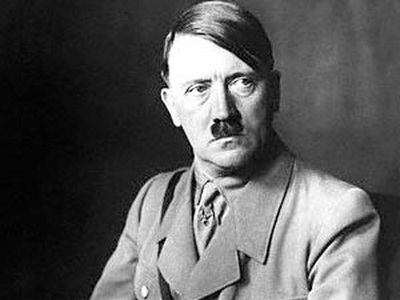Adolf Hitler is one of history’s most infamous dictators, thought to be responsible for the deaths of millions of people as he sought to create an Aryan race. Hitler led Germany during World War Two in his position at the helm of the Nazi Party. He used a plethora of weapons including machine guns, aerial bombing, torpedos, rockets, chemical warfare and napalm as he attempted to inflict his philosophy upon the world.

However, academics have recently discovered that Hitler had also ordered the construction of a nuclear weapon as part of a failed German nuclear reactor programme. This is believed to have been at least part of the motivation behind the US Manhattan Project.
The Nazi uranium originally made its way to the University of Maryland in 2013, 68 years after the end of World War Two. However, no one knows how it came to be there as it simply arrived with a mysterious note that read: “Taken from the reactor that Hitler tried to build. Gift of Ninninger.”
According to scientists at the university, the perfectly cubed uranium is just one of 659 cubes once belonging to the Nazis. However, none of the other 658 cubes – retrieved by Allied forces in 1945 during a mission to the German town of Haigerloch – have been recovered.
It is believed that the nuclear reactor fuel made it to New York City that same year, but all trace had vanished until the single cube was sent to the university.
Professor Koeth, who found the cube on his desk six years ago, employed the help of PhD candidate Miriam Hiebert to help solve the riddle.
“I was stunned. I didn’t have words. But once I got past the awe of this, the pesky physics questions started coming out. How do we know it’s real, where did it come from and what was the path it took to get here?”
Despite the failure of the German nuclear reactor programme, it is responsible for motivating the Manhattan Project team to speed up their work. This resulted in the team making dramatic leaps forward in their nuclear research and eventually creating the atomic bomb.
Professor Koeth said: “This cube represents the motivation of the entire Manhattan Project, and the entire ensuing atomic age, and everything that we’ve had to live with since then.”

To ensure that the cube was authentic, Koeth and his team analysed it with a high-resolution gamma-ray spectrometer. They identified that it had strong signs of radioactive isotopes and is therefore not simply a cube of depleted uranium.
Currently, the scientists are unable to determine where the other cubes may have ended up, although they did manage to trace it to a Robert D Nininger from Rockville in Maryland, who had once worked on the Manhattan Project.
However, the scientists are refusing to give up and are now looking for more clues to the whereabouts of Hitler’s missing uranium cubes.
Ms Hiebert said: “The cubes have a story to tell about why the German nuclear program didn’t work, and why the Manhattan Project did.
“I’m also interested in the people who’ve had these cubes. There’s this weird club they don’t know they’re a part of, and we want to get some of those stories.”
